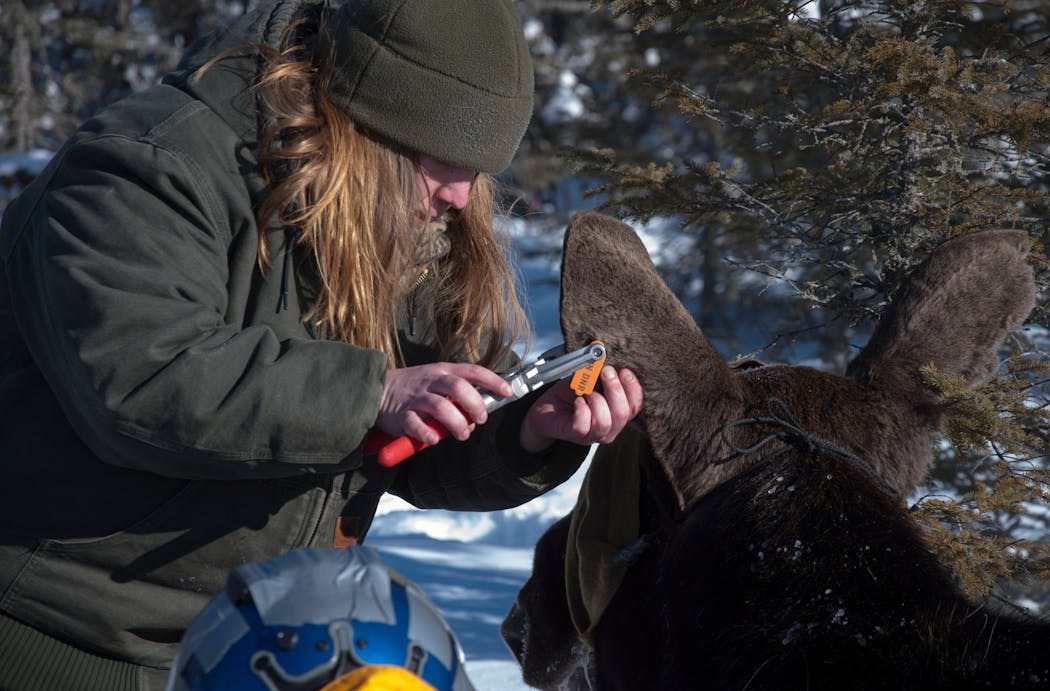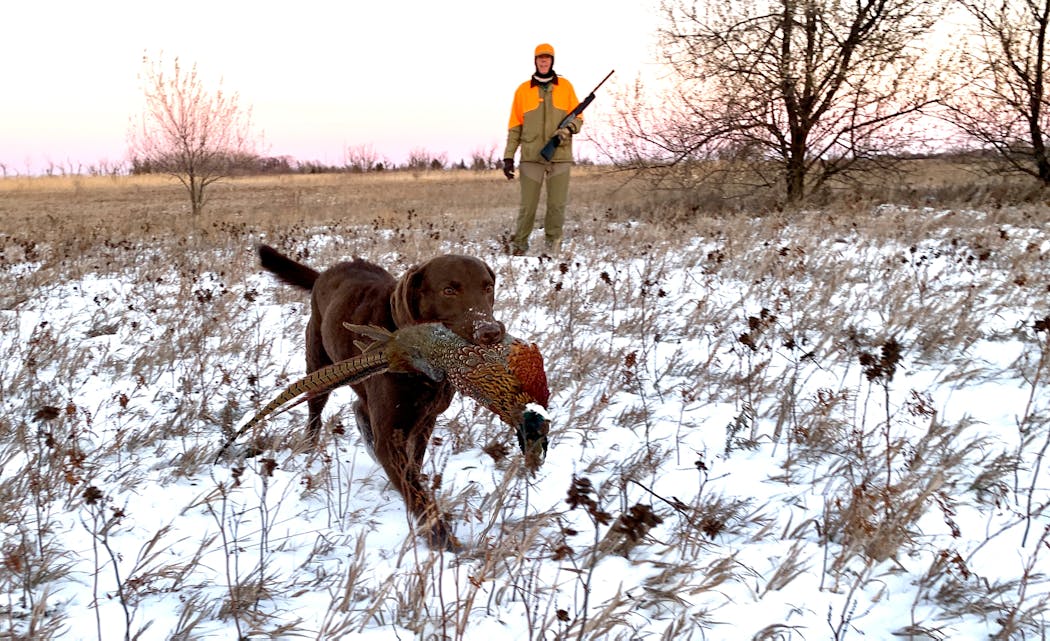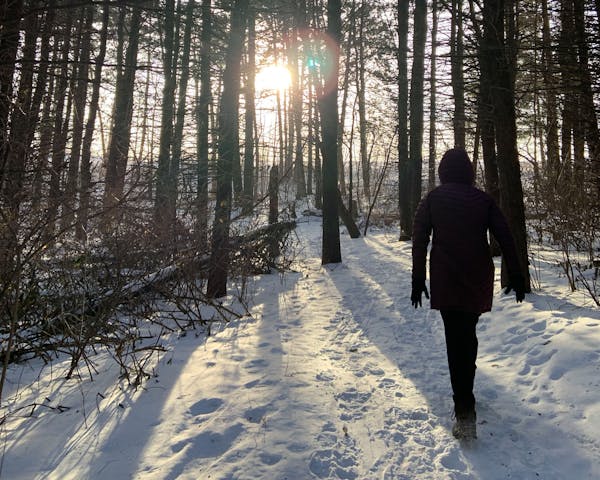A remarkable year of acquisition and enhancement of public land is in store for outdoor enthusiasts in 2023, starting with $167 million in projects recommended for legislative approval by the Lessard-Sams Outdoor Heritage Council.
The single-year, record amount of spending proposed by the council is anchored by the planned $22 million acquisition of a giant 2,000-acre parcel in northern Washington County that has been home to an ecologically friendly cattle ranch. Lessard-Sams Assistant Director Joe Pavelko said blocks of clean land of that size are rarely available, let alone in the metro area.
Loaded with grassland, the property would be purchased by Trust for Public Land and become a new wildlife management area under the Department of Natural Resources for hunting, habitat preservation, hiking and foraging. The investment will coincide with Washington County's expansion of Big Marine Regional Park under a deal with the same landowner, Kelley Farms.
The development is in keeping with DNR's partnership theme for 2023. The state-controlled fish and game agenda for the new year will include new efforts to protect native rough fish, lobbying for the retooling of two state fish hatcheries, completing long-overdue management plans for major wildlife areas and honing in on a Fond du Lac Band of Chippewa plan to reintroduce elk to a region of northeastern Minnesota.
"What are the final concerns out there? What else do we need to know?'' asked Kelly Straka, DNR wildlife section chief.
Her team of eight wildlife section leaders is at full force with five new hires. In the realm of partnerships beyond elk, her department in 2023 intends to finalize a memorandum of understanding with the Board of Animal Health to spell out roles and responsibilities to co-manage the state's deer and elk farms. Previously, when the farms were regulated primarily by the Board of Animal Health, DNR wildlife biologists linked outbreaks of chronic wasting disease (CWD) in wild deer to farms where the disease festered in captive deer and elk.
Straka said the DNR's response to CWD in 2023 also will build on a new partnership forged with taxidermists. In 2022, taxidermists across the state were paid by the DNR to collect tissue samples from deer brought in by hunters. Continued CWD surveillance is a cornerstone of Minnesota's attempted management of the always-fatal disease. Straka also said the DNR will build on last year's pilot program that provided a limited number of mail-in kits for hunters to test deer on their own at no cost to them.
In other wildlife pursuits, Straka said she's looking forward to fulfilling a new grant for planning large-scale moose habitat restoration in the Arrowhead region. The National Fish and Wildlife Foundation award is for $443,600, applicable to three separate areas, ranging from 10,000 to 50,000 contiguous acres each.
At the Legislature, Straka intends to work with agriculture to build up the state's response to livestock and crop damage caused by wild animals. Other states have stronger programs than Minnesota to answer depredation, Straka said. "I don't like to see wildlife painted as a problem,'' she said.
Fishing focus
State Fisheries Chief Brad Parsons said lawmakers this year will again hear about hatchery deficiencies and the need for major retooling of facilities in Waterville and Crystal Springs. Millions of dollars in upgrades to those facilities are needed to achieve fish stocking goals. The hatchery infrastructure program began with the successful overhaul of DNR's hatchery in Lanesboro.
Former DNR commissioner Mark Holsten, who now is executive director of the nonprofit MN-FISH Sportfishing Foundation, said the hatcheries are in need of $60 million in state funding. MN-FISH will advocate for the spending, along with $37 million or more to upgrade boat accesses and other facilities to support shore fishing.
Parsons said another fishing discussion in the new year will revolve around native rough fish. He wants to enrich the state's overall understanding of gar, redhorse suckers, sheepshead and other nongame species in order to recognize and highlight their ecological importance.
"It'll be front and center,'' he said. "We're going to involve the public, including commercial fishing and the bow fishing community.''
Similarly, there will be a rekindling of public debate this year around muskie stocking. That is because the DNR needs to update its statewide management plan for the big predators. Parsons said his department also will discuss what can be done to support Minnesota's live bait suppliers. The industry encountered trapping difficulties last year related to drought and other factors.
Land protection
Elsewhere across the outdoors landscape, various Minnesota conservation groups will be lobbying in Washington, D.C., on the Farm Bill, Recovering America's Wildlife Act and the North American Grasslands Conservation Act. As always, there's hope for an increase in Conservation Reserve Program acres when the Farm Bill is reauthorized.
All three pieces of legislation will surely be discussed in mid-February at Pheasant Fest, to be held at the Minneapolis Convention Center. As always, Pheasants Forever is hosting the event and spokesman Jared Wiklund said guests will include U.S. Fish and Wildlife Director Martha Williams.
For the first time in its history, Wiklund said, Pheasants Forever will announce its own property acquisition. The group's new step into permanent land protection draws on money from its own donors and members to buy a parcel of more than 300 acres near Mora. Wiklund said the action will create the organization's first "Habitat Management Area,'' open to public hunting.
The move is separate from 80,000 acres of prairie land acquisition and restoration outlined in the 2023 package of Lessard-Sams habitat projects. Overall, the council's 2023 proposal includes 46 projects. Besides prairie projects, the work will protect or enhance 14,000 acres of forest, 20,000 acres of wetlands and 7,000 acres of mixed habitat.
Pavelko of Lessard-Sams said the proposal to spend a record $167 million also would unlock $32.6 million in matching funds for habitat work. The previous Lessard-Sams record, set in 2022, was $159 million.



